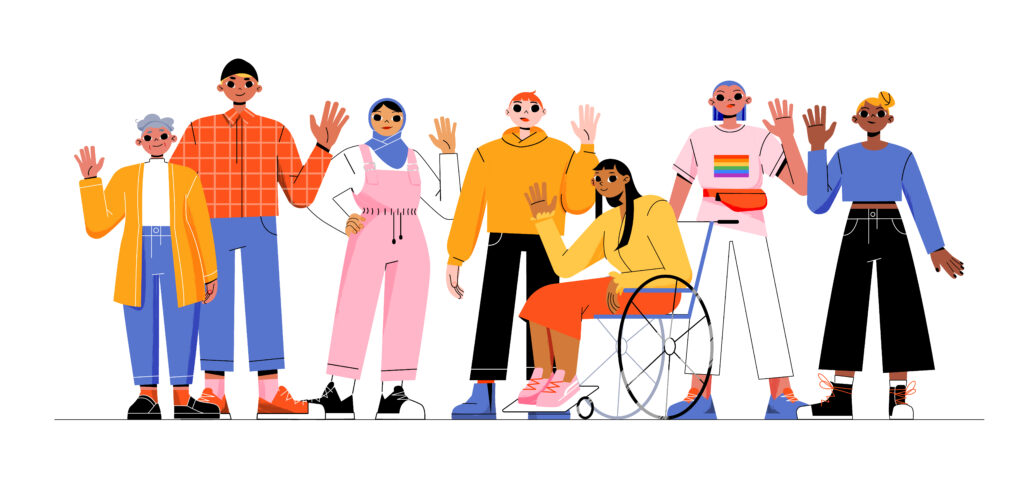Have you ever wondered why some companies thrive in innovation, collaboration, and growth, while others struggle to keep pace? The answer often lies in one critical factor: diversity and inclusion. In fact, companies that embrace diversity are proven to be 35% more likely to outperform their competitors and experience up to 19% higher revenue through increased innovation and creativity.
In today’s global marketplace, building an inclusive team isn’t just the right thing to do—it’s a business imperative. A diverse workforce brings together different perspectives, which fosters creativity, enhances problem-solving, and improves decision-making. The result? Teams that are more engaged, more productive, and ultimately more successful.
Yet, achieving diversity and inclusion requires more than just good intentions. It starts with how you hire. That’s where PerspectAI steps in. Using cutting-edge, game-based pre-employment assessments, PerspectAI evaluates candidates not just on their technical abilities but on interpersonal skills too—ensuring that every hire is based on real talent and not bias. By leveraging skill-based assessments, companies can reduce hiring time, save costs, and build truly inclusive teams from day one.

Ready to transform your workforce? Here are seven actionable tips to help you build an inclusive team and foster diversity in your workplace!
How Can You Foster Diversity and Inclusion?
Diverse teams drive innovation, increase creativity, and outperform homogeneous teams by wide margins. However, building such teams requires a purposeful approach. Below are seven actionable tips that can help your organization build an inclusive, diverse, and high-performing team.
According to Glassdoor, 76% of candidates and workers set a diverse workforce as a key factor when evaluating job offers.
Creating an inclusive team and fostering diversity is more than a corporate responsibility—it’s a strategic advantage. Diverse teams drive innovation, increase creativity, and outperform homogeneous teams by wide margins. However, building such teams requires a purposeful approach. Below are seven actionable tips that can help your organization build an inclusive, diverse, and high-performing team.
1. Prioritize Diversity and Inclusion in Your Hiring Practices
Hiring inclusively isn’t just about filling quotas—it’s about ensuring that every candidate is evaluated based on their real abilities, not biased perceptions. Traditional hiring methods often unintentionally favor specific demographics, but with skills-based assessments, you can remove this bias and focus on what truly matters: talent.

A lot of new-age platforms offer game-based assessments that provide a standardized, objective evaluation of both technical and interpersonal skills. These interactive tools engage candidates and provide deeper insights into their capabilities, leaving little room for unconscious bias to cloud decisions. Companies like Unilever have seen a 16% rise in hiring diversity by using similar AI-driven assessments. By focusing on what candidates can do rather than who they are on paper, you open doors to a broader, more diverse talent pool.
2. Encourage Open Communication and Transparency
Inclusive teams thrive when there’s open communication and a sense of psychological safety. Employees should feel that their opinions are valued, regardless of their background or position. Here’s how you can encourage transparency and foster inclusive communication:
- Create Safe Spaces for Dialogue: Allow for forums, town halls, or anonymous feedback systems where everyone can share their thoughts without fear of repercussions.
- Model Inclusivity from Leadership: Leaders should actively invite contributions from all team members and ensure that quieter voices are heard.
- Promote Active Listening: Train managers and teams to engage in active listening, where all viewpoints are considered before making decisions.
A study by Forbes found that companies with a high level of transparency have 40% higher employee satisfaction. When communication is open, diverse voices can truly thrive.
3. Invest in Unconscious Bias Training
We all carry unconscious biases—beliefs and assumptions about people based on their gender, race, or even appearance. These biases can negatively affect hiring, promotions, and team dynamics. To mitigate their impact, organizations must invest in regular unconscious bias training.
Unconscious bias training can help employees and leaders:
- Recognize their own biases.
- Make decisions based on data and merit, not stereotypes.
- Build a more inclusive culture where everyone feels valued.
New-age platforms complement this training by providing data-driven assessments, ensuring decisions are grounded in evidence rather than bias, further enhancing the inclusivity of your hiring process.
4. Create Opportunities for Growth and Development
Inclusion goes beyond hiring. To retain diverse talent, companies must create equal opportunities for career advancement. Here’s how you can ensure everyone has the chance to grow:
- Offer Mentorship Programs: Provide formal or informal mentorship opportunities that pair diverse employees with senior leaders.
- Use Skills Gap Analysis: Leverage tools like PerspectAI to assess the current skills of employees and offer tailored training programs to close gaps, allowing all team members to develop and succeed.
- Promote from Within: Ensure that promotions are based on merit and skills, not just who’s in the right networks.
Growth isn’t just about climbing the ladder—it’s about developing everyone.
5. Build Diverse Teams Across Departments
Diversity shouldn’t just exist in one department; it should be spread across the entire organization. A diverse team brings new ideas, experiences, and perspectives to the table, leading to better decision-making and innovation. Here are a few tips for ensuring diverse teams across the board:
- Avoid Tokenism: Make diversity a priority across all departments, from HR to tech to leadership.
- Promote Collaboration: Encourage cross-departmental collaboration so that different perspectives mix and match to create innovative solutions.
- Track Diversity Metrics: Measure the diversity of your teams regularly and ensure that leadership reflects the organization’s values.
Studies show that companies with diverse teams are 70% more likely to capture new markets, while homogeneous teams are slower to adapt to change. Ensuring diversity across departments allows your company to see issues and opportunities from various angles.
6. Measure Diversity and Inclusion Regularly
You can’t improve what you don’t measure. Tracking diversity and inclusion metrics is critical for understanding where your company stands and identifying areas for improvement. Here’s how to measure effectively:
- Diversity Metrics: Track the representation of gender, race, and other underrepresented groups across all levels of the organization.
- Inclusion Metrics: Measure whether employees feel included and valued through surveys, focus groups, or anonymous feedback tools.
- Use Data to Make Informed Decisions: Data-driven insights dive into the strengths and potential of candidates, helping companies make informed, bias-free decisions.
By analyzing these metrics regularly, you can hold your organization accountable and make continuous progress toward your diversity goals.
7. Foster Employee Resource Groups (ERGs)
Employee Resource Groups (ERGs) are a powerful way to support underrepresented groups and foster inclusion within an organization. ERGs provide a safe space for employees to connect, share experiences, and advocate for the changes they want to see. Here’s how ERGs can transform your workplace:
- Build a Sense of Belonging: ERGs allow employees to feel connected and heard, which in turn improves engagement and satisfaction.
- Provide Leadership Opportunities: Running an ERG gives employees leadership experience, helping them grow professionally.
- Drive Organizational Change: ERGs can provide valuable feedback to leadership about policies or practices that need improvement to ensure inclusivity.

For example, Facebook and Microsoft have thriving ERG programs that focus on women, LGBTQ+ employees, veterans, and other minority groups. These programs have not only improved internal culture but have also helped the companies better serve their diverse customer bases.
Diversity and inclusion are no longer just buzzwords in the field of recruitment—they are critical elements of a successful, future-forward company. By prioritizing these strategies, businesses can not only increase employee engagement and retention but also drive innovation and profitability. Tools like PerspectAI provide the infrastructure needed to eliminate biases and build inclusive teams from the hiring stage onwards. By leveraging data and focusing on skills rather than preconceived notions, companies can foster a work environment where diversity and inclusion thrive.